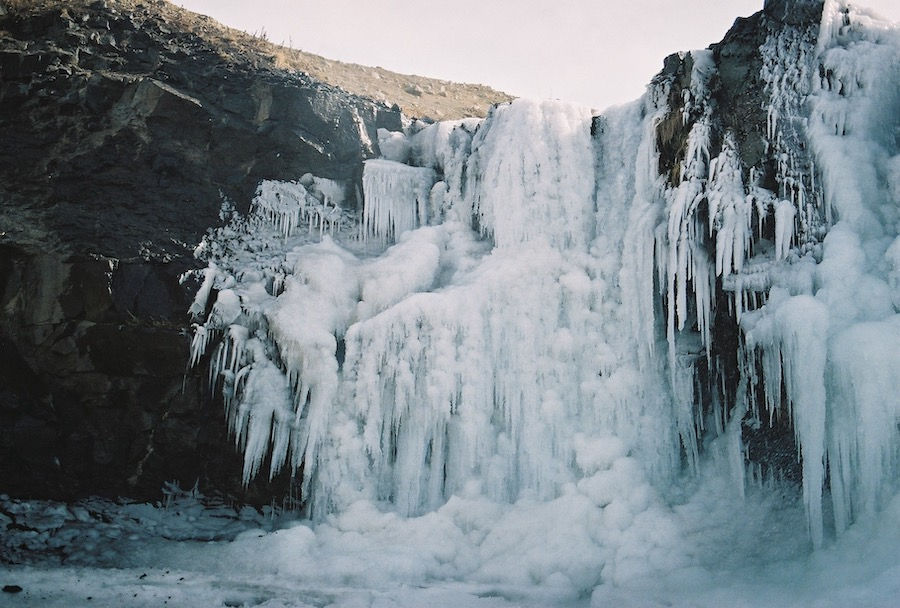Skata day
- ÚR VÖR
- Dec 15, 2020
- 3 min read
Updated: Feb 7, 2021

It was a crisp clear 23rd of December. A blue winter sky bounced off the snow coated streets and mountainous sides of the fjord. The soft powder drifts of yesterday had hardened with a toffee-thin crust I continuously broke through on my way to work.
The restaurant was hosting its last event before the Christmas break, a buffet, which along with jólabjór and lights, signals Iceland’s official start to Christmas. As I bounded through the snow, I cut through pockets of air heavy with a potent scent. This was my first sniff of Þorláksmessa; what I call, Skata Day.
Skata Day honors Iceland’s patron saint, Saint Þorlákur on the day of his death, with a feast of skata: skate, fermented then steamed or boiled, to create a dish with ammonia levels high enough to cause severe burns and lip swelling.
I can find no evidence that Þorlákur ever tasted skata. If he did, I wonder if he loved it or hated it; these being the only two opinions available.
With a plentiful array of fish, Iceland used to consider skate, with its tough cartilage and minimal meat, not worth the effort. When caught it was thrown from sorting tables, forgotten. But, with communities isolated from the capital’s food imports by weather and distance, they had to find ways to eat what was normally thought inedible. Already having the practice of fermentation with hákarl (rotten shark), it must have seemed a logical step to test out those known techniques on all that uneaten skate.
I can imagine these early trial and error experiments done by gnarl-faced fishermen. Sometime over summer one of them would have thrown salt and skate in a barrel, covered it up, and left it to rot in a dark corner. Months later the men would have gathered around the barrel, the fumes of ammonia wafting into their faces. I can see these environment-toughened men stepping back, surreptitiously wiping tears from their eyes.
Pushing the youngest forward he’d pick out a morsel and, to a chorus of goading and encouragement, throw it back. Then they’d wait: five minutes, eight hours, a day; to see if the tester got sick. How many tries did it take until they found the perfect combination of salt, time, and cold that made rotting skate edible rather than poisonous?
Today it’s the same, just more scientific: controlled temperatures, specified salt levels, plastic covers to ensure protection, and three to six months later true pungency is reached. Then, on the 23rd of December it’s unpacked, steamed or boiled and served hot with potatoes, turnips, and rye bread smeared with butter or lambs fat, to the delight of many and the horror of others.

On my first Skata Day, 110 guests ate at the restaurant. By 12pm carols were drowned out by the swell of conversations. Buffet trays of side dishes were laid out and in the kitchen columns of black-poly-boxes, filled with trays of hot skata, were stacked head height.
Inside the boxes steam swirled until, with the diners lined up, plates in hand; the latches were unclasped, the poly door squeaked open, and a billow of ammonia gusted into the opener’s face, hair and clothes.
The feasting began.
I held my breath as long as possible. Rivers of tears flowed down my face. I began dashing from the kitchen, where I unceremoniously dumped dirty plates, to the nearest exit so I could escape, gasp for breath, and try not to vomit. Recovered, I’d dive back into the ammonia haze - which would take two weeks to clear the restaurant, and four washes to clear my clothes. By the end of the day, I was bargaining money and beers so I wouldn’t have to open the last black box. My Icelandic counterparts shook their heads and laughed.
Those I know who love skata and are excited for its annual arrival, tell me they’ll cook it at home if restaurants don’t open this year. When I ask how they’ll combat the smell getting stuck to everything in their house, their voices drop into a confiding whisper, “Well, to tell the truth, I’ve convinced my in-laws to have it at theirs.”



Comments